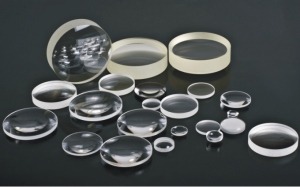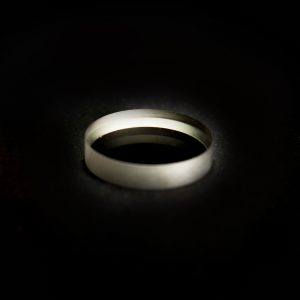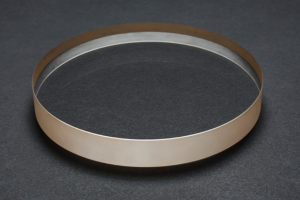Optical material is the object of processing various optical elements, and is an important part of optical instruments. Optical materials include optical plastics, optical glass and optical crystals.
Composition of optical glass
The main differences between optical glass and ordinary glass are as follows: optical glass contains most of the elements in the periodic table, but its composition and content are different. Optical glass has physical and chemical uniformity, high transparency and specific and accurate optical constants.
Generally, silica, also known as quartz sand, is the main component of optical glass. When melting the glass, other substances should be added to improve the performance of the glass and meet the needs of relational imaging. For example, adding alumina can improve the chemical stability and mechanical strength of glass; The addition of lead oxide and barium oxide can improve the refractive index of glass, but the chemical stability is reduced; Adding sodium oxide can reduce the melting temperature of glass; In addition, other oxides can improve the chemical stability and mechanical strength of the glass. The glass with silicon dioxide as the main component belongs to silicate glass, the main component of boron trioxide B2O3 belongs to borosilicate glass, and the main component of phosphorus pentoxide P2O5 belongs to phosphate glass.
Physical properties of optical glass
Glass material form: strictly speaking, glass is not solid. There is no definite curing temperature during the cooling process of glass melt. Glass retains the irregular arrangement of liquid molecules, that is, low-temperature solid retains the structure of high-temperature liquid, which is called glass state.
Physical properties of glass
Isotropic: The hardness, elastic modulus, refractive index and other properties of glass are the same in all directions.
Classification and nomenclature of optical glass
There are many kinds of optical glass, most of which are colorless optical glass. The name of optical glass mainly refers to colorless optical glass.
Varieties and grades of optical glass: countries and glass manufacturers have their own classification and brand representation methods. Most of them use Latin letters as variety symbols, such as K, ZF, F, etc., and the variety is followed by the trademark.
According to the classification methods of various countries, optical glass can be divided into two categories according to Abbe coefficient, namely, crown glass and flint glass. The approximate boundary is γ= 50; In China, K represents crown glass and F represents flint glass.
According to the different refractive index and chemical composition, other small types are also derived from the two types of glass, Mian Pai and flint.
Classification of colorless optical glass
According to the position of dispersion coefficient vd and refractive index nd and glass composition, colorless optical glasses are divided into 16 categories.
Optical glass grade
Each optical glass grade consists of the code name and serial number of the glass class to which it belongs. In addition, each brand is represented by six values. The first three values represent the third digit after the decimal point of the refractive index of the brand glass, and the last three values represent the Abbe number of the brand glass.
Lead, arsenic and cadmium free glass grade:
Glass labels free of lead, arsenic, cadmium and other radioactive elements have prefixes of “H” and “-“, such as H-K9L.




